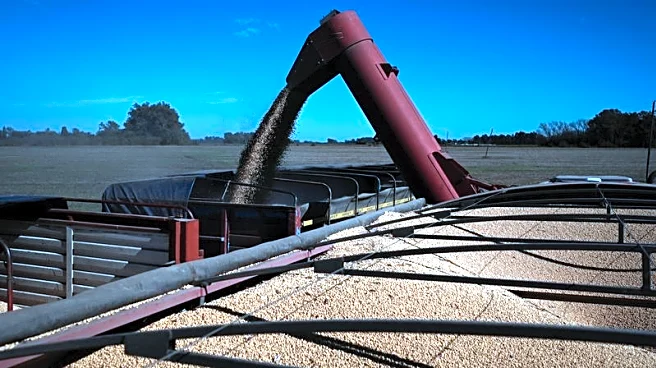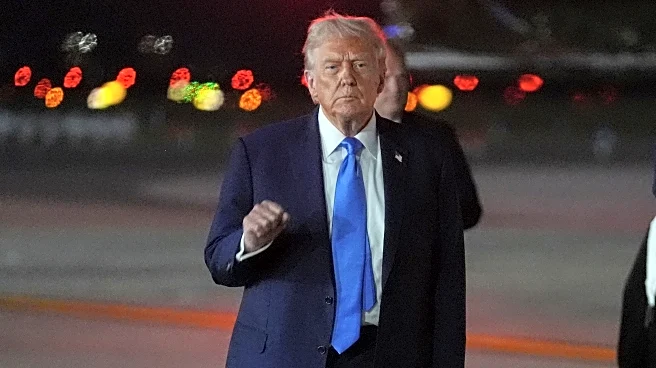What is the story about?
What's Happening?
The U.S. soybean harvest has commenced without any orders from China, the world's largest buyer, marking a significant shift in trade dynamics. Historically, China has purchased over half of U.S. soybean exports, but recent months have seen a complete halt in shipments. Meanwhile, Brazil has set a record for soybean exports to China, with 76% of its total exports from January to August 2025 going to the Asian nation. This shift is attributed to China's increased tariffs on U.S. soybeans and its strategic pivot towards Brazilian supplies, which have surged by 40% since 2018.
Why It's Important?
The absence of Chinese orders for U.S. soybeans could have significant economic repercussions for American farmers, who are already facing financial pressures from rising input costs and limited storage capacity. The shift in trade patterns underscores the impact of geopolitical tensions and trade policies on agricultural markets. Brazil's growing dominance in the soybean market highlights the competitive challenges faced by U.S. producers. The situation could lead to increased financial stress for U.S. farmers and affect the broader agricultural supply chain, including grain elevators and transportation networks.
What's Next?
If a trade deal between the U.S. and China is not reached soon, American soybean producers may face further economic challenges, potentially leading to changes in planting decisions for the next growing season. The U.S. government may consider providing financial assistance to affected farmers, similar to measures taken during previous trade disputes. Meanwhile, Brazil and other South American countries may continue to expand their soybean acreage to capitalize on the growing demand from China, further altering global trade dynamics.
AI Generated Content
Do you find this article useful?














